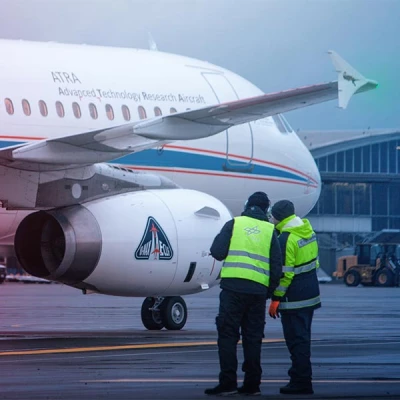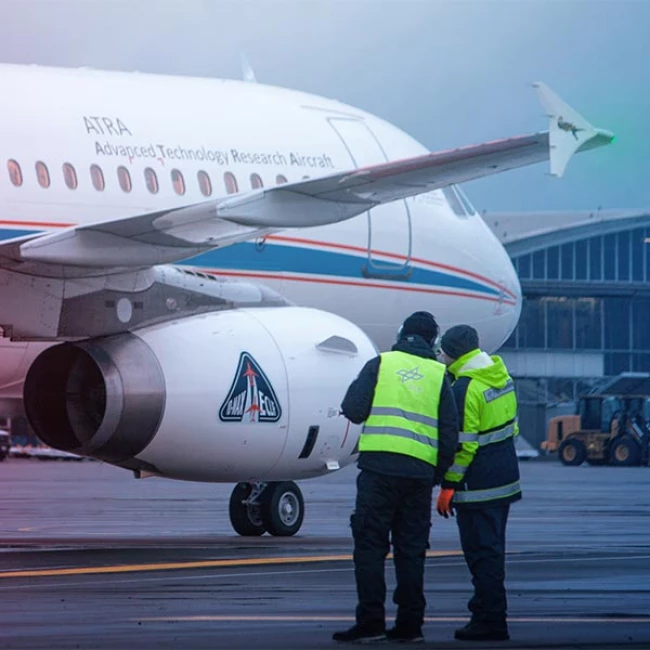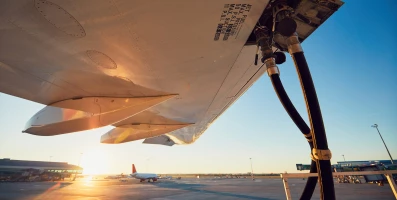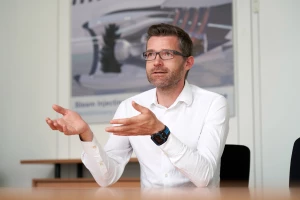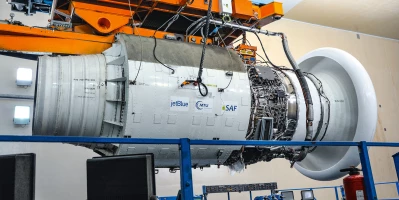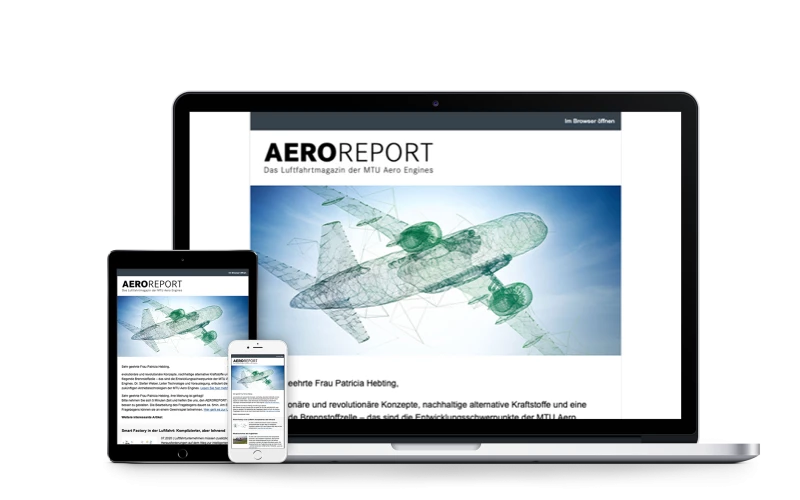innovation
Research flights for the climate
How do exhaust gases from alternative aircraft fuels behave in the atmosphere? An unusual flight log.
03.2018 | author: Andreas Spaeth | 8 mins reading time
author:
Andreas Spaeth
has been traveling the world as a freelance aviation journalist for over 25 years, visiting and writing about airlines and airports. He is frequently invited to appear on radio and TV programs.
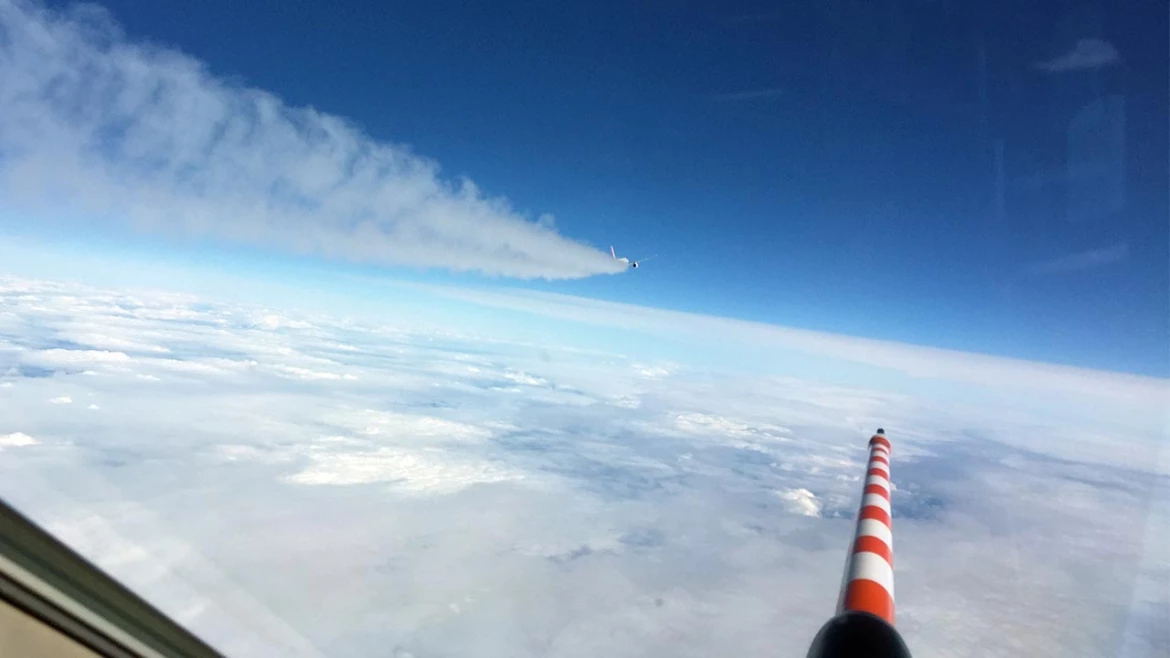
It's a rainy January morning at Ramstein in south-western Germany. The ramp of the biggest American air base outside the U.S. is packed with grey C17 transport aircraft parked side by side. Somewhere in between hides an odd couple of civilian aircraft, smaller than the rest and easily overlooked. One of them is a real rare species: the world's last flying DC-8 passenger jet now serving as NASA's flying laboratory, stationed in Palmdale, California. It is accompanied by German Aerospace Center's ATRA (Advanced Technology Research Aircraft), an A320 based in Braunschweig. The German research aircraft, which used to fly passengers for holiday airline Niki and is now used for scientific missions, is having 18 metric tons of fuel pumped into its wings. Half of it consists of the biofuel HEFA (hydro-processed esters and fatty acids), which is obtained from camelina oil seeds. The aim of this research mission is to prove with physical measurements that mixing kerosene with biofuels reduces the impact of flying on the climate. Today's schedule: in-flight probing of emissions caused by jet fuel mixed 1:1 with HEFA. This high ratio of HEFA is being tested for the first time; in day-to-day flight operations a much lower concentration is more realistic.
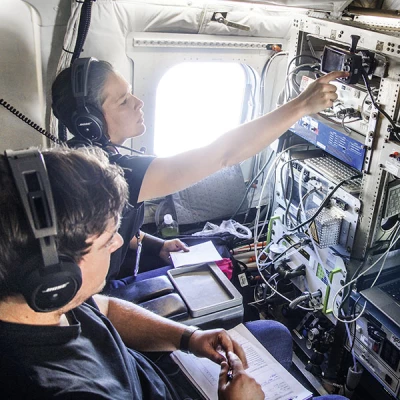

Now flying lab equipment instead of vacationers: Measuring instrumentation on board the DLR's A320 ATRA, which was previously operated by holiday airline Niki.

Now flying lab equipment instead of vacationers: Measuring instrumentation on board the DLR's A320 ATRA, which was previously operated by holiday airline Niki.
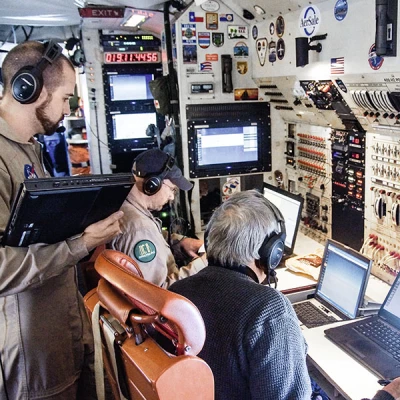

Instrumentation for conducting 20 different types of measurement is installed in the DC-8's cabin, which is some 42 meters long and previously accommodated 250 passengers.
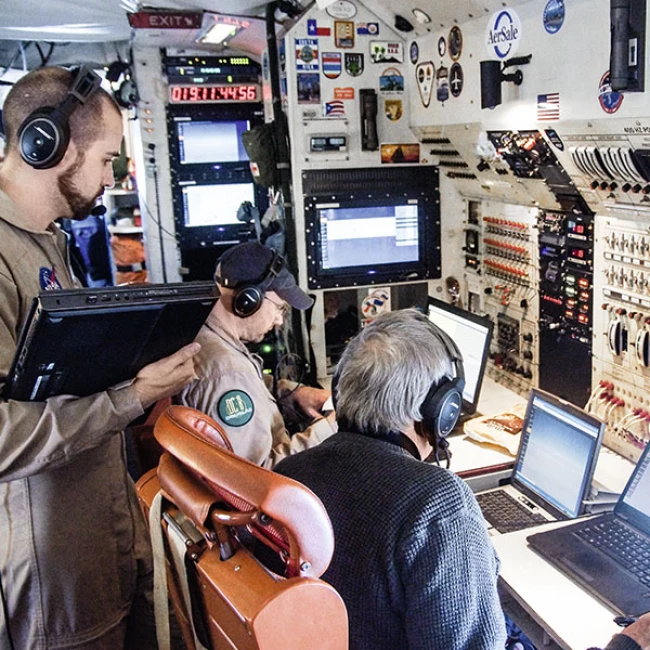
Instrumentation for conducting 20 different types of measurement is installed in the DC-8's cabin, which is some 42 meters long and previously accommodated 250 passengers.
Fly straight ahead for six minutes, turn to the left, straight ahead for another six minutes, turn to the right
After take-off from Ramstein the flight turns towards Northern Germany into temporarily restricted air space. It is here that the Airbus flies around hour after hour, six minutes straight ahead, a turn to the left, straight ahead for another six minutes, then a turn to the right. But the A320 is not flying alone. Shortly after the ATRA, an aircraft that is probably the most unusual flying lab in the world has taken off and is following the Airbus. This is a four-engine passenger jet from the early days of the long-haul aircraft age, a McDonnell Douglas DC-8-72. Many European airlines such as KLM, SAS or Swissair operated DC-8s from the 1960s to the 1980s. This aircraft, the last remaining one of its kind, was originally delivered to Alitalia in 1969. Since 1986, it has been serving as NASA's biggest research aircraft. At the time it was retrofitted with CFM56 engines that are still surprisingly quiet by today's standards. "With its infrastructure and expert crew, the DC-8 is the best research platform in the world," says Dr. Hans Schlager from the German Aerospace Center's Institute of Atmospheric Physics. Before the aircraft crossed the Atlantic, the German Aerospace Center and NASA installed instruments for taking 20 different kinds of measurements in the 42-meter long cabin, which used to accommodate over 250 passengers. Some tubes are also installed outside on the fuselage. On the right wing tip there is a golden cloud spectrometer, which combines five complex instruments in one. There is also a laser pointing through the window at the wing tip to measure water vapor in the vicinity of contrails and ice clouds.
Reducing climate effects despite growing air traffic
The aviation industry is often blamed for exacerbating global warming, so far mostly focusing on emissions of the greenhouse gas CO2. Here aviation has set itself ambitious goals: Through improvements in aircraft and engine technology as well as use of fuels and measurements to compensate climate effects, any growth must be CO2-neutral. Guidelines issued by the UN aviation organization ICAO call for halving CO2 emissions versus the 2005 amount by 2050. "Aviation is responsible for about five percent of human-induced climate effects, of which CO2 emissions account for two fifths. The rest are nitrogen oxides and long-lasting contrails, which are now in focus," says Schlager. This is where we can make a difference, according to scientists, to reduce the effects of the ever-growing aviation industry on climate change. Every 15 to 20 years, global air traffic doubles; in 2017 a new record was set with 4.1 billion passengers. By 2036, IATA forecasts 7.8 billion. To meet this demand, aviation must become more sustainable.
The DLR's A320 flying ahead looks tiny against NASA's DC-8.
Alternative fuels hold great promise for achieving more environmentally friendly flying. Many tests and their daily use in scheduled operations have proven that fuels produced from biomass or seed oil can be easily mixed and burned inflight together with ordinary kerosene. The problem is, however, that this sustainable fuel is currently three times the price of fossil fuel, so the commercial incentive to use it is lacking. "But it is important to develop data and methods for its use now while oil prices are relatively low, so that we have it available once oil becomes expensive again and the focus shifts towards renewable energies," says Dr. Patrick Le Clerq from the German Aerospace Center's Institute of Combustion Technology.
Flying into the secondary zone of contrails
After taking off from Ramstein with 14 scientists and six crew members on board, it is NASA pilot Wayne Ringelberg's job to go on a "sniffing" mission for climate research. "We have to fly very precisely into the secondary zone of contrails, about 15 to 20 miles behind the ATRA while maintaining a distance of at least 2.5 miles from the preceding A320, so sometimes we experience some turbulence on board," says the former combat pilot. The scientists are mostly buckled in during the missions of up to six hours and communication is only possible via headsets. Damp and cold weather is a decisive prerequisite for the missions, as these conditions are ideal for the formation of contrails. Conditions are good when 45 minutes after take-off they reach the target area above the coast of the Baltic Sea. Briefly, the DC-8 flies alongside the ATRA to calibrate the altimeters. Then she settles behind the Airbus for hours to thoroughly document the emissions of its engines and what kind of contrails they create at altitudes between eight and twelve kilometers. Especially relevant to the climate are the long-lasting ones that remain in the sky for between two and 20 hours, creating high-altitude ice clouds known as contrail cirrus clouds. While these clouds can have both cooling or warming effects on the ground, their warming effect is more prevalent.
They are created when water droplets condense on soot particles from the engine exhaust, then freeze and form ice particles. "The number of soot particles plays an important role. Burning biofuels results in up to 50 percent less soot, which in turn changes the number and size of ice crystals," explains Schlager. "This way, the life span of the contrails is shortened and they have a reduced radiation impact on average." If all flight operators would fly with a fuel mix containing 50 percent HEFA, scientists estimate that the contrail cirrus clouds worldwide could be reduced by 30 percent.
The significant effect of long-lasting contrails is a recent scientific finding. "They probably have more of a warming impact on the earth's atmosphere than all CO2 emissions in the atmosphere produced by aviation collectively in the last hundred years," estimates Schlager. "But then the exact global impact of contrails is very hard to calculate with theoretical models. That's why the measurements we take in this campaign are so important," says the expert from the German Aerospace Center. It will take another year, however, to analyze the gigabytes of data they obtain. As both aircraft return to Ramstein, the scientists on board are treated to a glimpse of the evening sky, which is spectacular tonight–mostly thanks to the many contrails crisscrossing it, glowing in deep shades of orange and red.







